
I have butterflies inside my being as I sit down to write about 52 Suburbs' visit to suburb No. 7,
Castlecrag.
I've visited Castlecrag a few times before this week. But never have I been so bold as to knock
on the doors of complete strangers, quickly explain what I’m doing and would you mind, please,
could I photograph your (amazing, historic, iconic) home.
They could so easily have said no. And a few did. But for the most part they were as gracious and
generous as you could hope for. So, before we crack on, can I say from the bottom of my irrepressibly
curious heart, thank you to those kind souls that inhabit some of the planet’s most unique homes for
allowing me, my camera and you, my virtual travelling companions to have a stickybeak.
The other reason for the butterflies doing back flips and double somersaults inside of me is this -
I’m not sure if I can do justice to the passionate history of Castlecrag and its inspired architects
in my usual condensed '20 words or less' approach. I strongly advise anyone half interested to do
their own research as it’s an incredible story that warrants a more detailed investigation.
But for now, let me try and simplify things as much as possible: the history of Castlecrag in the
20th century = the Griffins and Hugh Buhrich.
Starting with the Griffins:
• In 1913, American architect Walter Burley Griffin and his wife, Marion Lucy Mahony, arrived
in Australia
• They were part of the so called Prairie School of architects, the most famous being Frank Lloyd
Wright. “Organic architecture” was their thing, the aim being to build structures that looked as if
they grew naturally from the site
• The Prairie School were also into the Transcendentalist philosophy of Ralph Waldo Emerson (who
said a few thousand Important Things like, “All life is an experiment. The more experiments you
make the better.” How good is that?)
• The Griffins won a competition to design Canberra but eventually the politics got to them. In the
early 1920’s they bowed out of the shenanigans to start a new ‘project’ on Sydney's lower North Shore
• Their plan? To build a bushland suburb that would “conserve for the residents all the remarkable
natural features of the place – its outlooks, monumental cliffs, caverns, ancient trees, fern glens,
wild flower glades, waterfalls and foreshores.”
• The way they achieved this was by building small single storey houses out of local stone with flat
roofs and no fences. They also designed roads to follow natural contours and retained reserves and
pathways to “perpetuate the delightful rambles which were a feature of Castlecrag before its
development.”
• Griffin named the suburb after a towering crag of rock overlooking Middle Harbour, known locally
as Edinburgh Castle. Hence all the streets with castle themed names – The Parapet, The Bastion etc
• While Griffin’s homes were successful in blending into the environment, some of the roofs leaked
and not everyone was so admiring of the designs. That and the arrival of the Second World War meant
that only 19 of the 40 houses he designed were ever built. He left in the mid 1920’s, leaving his partner
Eric Nicholls to run the Australian practice
• Times have certainly changed – nowadays the principles behind the Griffin houses and their
subordination to the landscape are understood and revered.
Part 1: The Griffins (and Eric Nicholls)
Castlecrag.
I've visited Castlecrag a few times before this week. But never have I been so bold as to knock
on the doors of complete strangers, quickly explain what I’m doing and would you mind, please,
could I photograph your (amazing, historic, iconic) home.
They could so easily have said no. And a few did. But for the most part they were as gracious and
generous as you could hope for. So, before we crack on, can I say from the bottom of my irrepressibly
curious heart, thank you to those kind souls that inhabit some of the planet’s most unique homes for
allowing me, my camera and you, my virtual travelling companions to have a stickybeak.
The other reason for the butterflies doing back flips and double somersaults inside of me is this -
I’m not sure if I can do justice to the passionate history of Castlecrag and its inspired architects
in my usual condensed '20 words or less' approach. I strongly advise anyone half interested to do
their own research as it’s an incredible story that warrants a more detailed investigation.
But for now, let me try and simplify things as much as possible: the history of Castlecrag in the
20th century = the Griffins and Hugh Buhrich.
Starting with the Griffins:
• In 1913, American architect Walter Burley Griffin and his wife, Marion Lucy Mahony, arrived
in Australia
• They were part of the so called Prairie School of architects, the most famous being Frank Lloyd
Wright. “Organic architecture” was their thing, the aim being to build structures that looked as if
they grew naturally from the site
• The Prairie School were also into the Transcendentalist philosophy of Ralph Waldo Emerson (who
said a few thousand Important Things like, “All life is an experiment. The more experiments you
make the better.” How good is that?)
• The Griffins won a competition to design Canberra but eventually the politics got to them. In the
early 1920’s they bowed out of the shenanigans to start a new ‘project’ on Sydney's lower North Shore
• Their plan? To build a bushland suburb that would “conserve for the residents all the remarkable
natural features of the place – its outlooks, monumental cliffs, caverns, ancient trees, fern glens,
wild flower glades, waterfalls and foreshores.”
• The way they achieved this was by building small single storey houses out of local stone with flat
roofs and no fences. They also designed roads to follow natural contours and retained reserves and
pathways to “perpetuate the delightful rambles which were a feature of Castlecrag before its
development.”
• Griffin named the suburb after a towering crag of rock overlooking Middle Harbour, known locally
as Edinburgh Castle. Hence all the streets with castle themed names – The Parapet, The Bastion etc
• While Griffin’s homes were successful in blending into the environment, some of the roofs leaked
and not everyone was so admiring of the designs. That and the arrival of the Second World War meant
that only 19 of the 40 houses he designed were ever built. He left in the mid 1920’s, leaving his partner
Eric Nicholls to run the Australian practice
• Times have certainly changed – nowadays the principles behind the Griffin houses and their
subordination to the landscape are understood and revered.
Part 1: The Griffins (and Eric Nicholls)

Cheong House 1

Cheong House 2

Cheong House 3
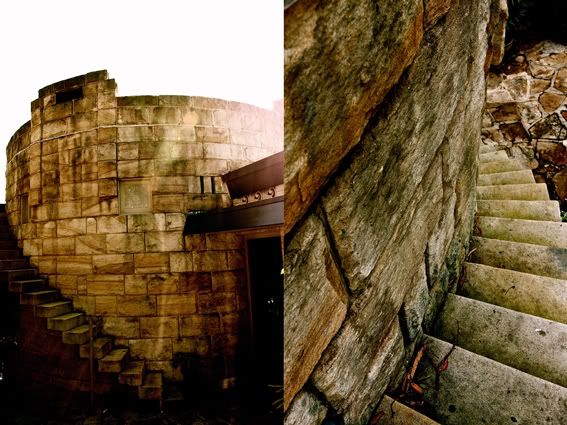
my home is my castle (Camelot 1)
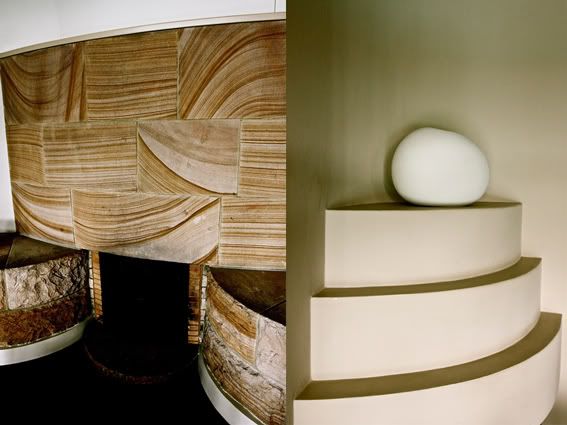
my home is my castle (Camelot 2)
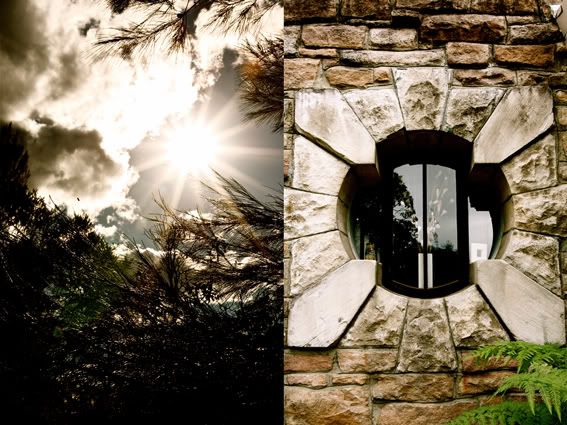
sunbursts (Johnson House 1)
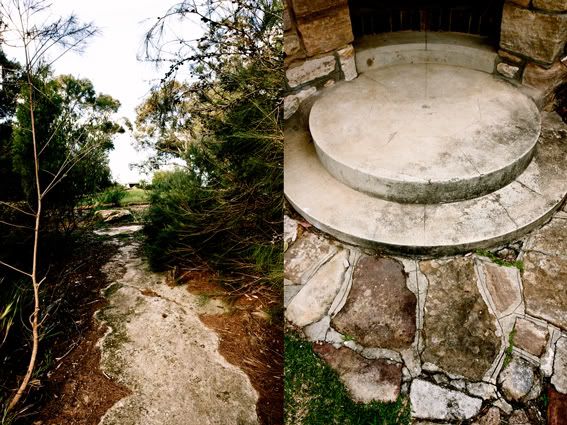
entrances (Johnson House 2)

stone - before and after (Johnson House 3)
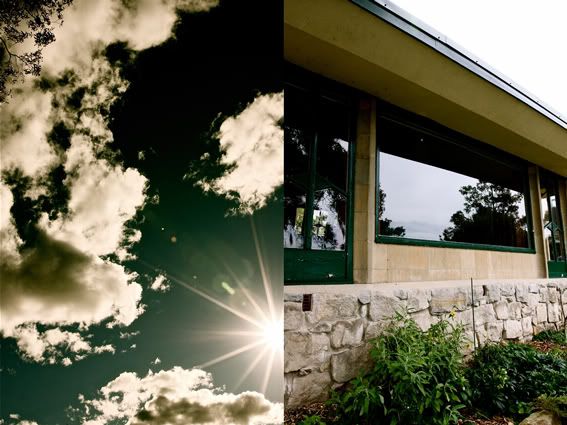
let the sky in (Felstead House 1)
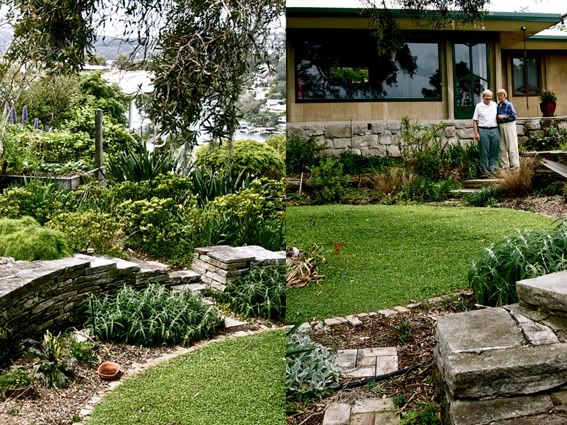
yin yang (Felstead House 2)
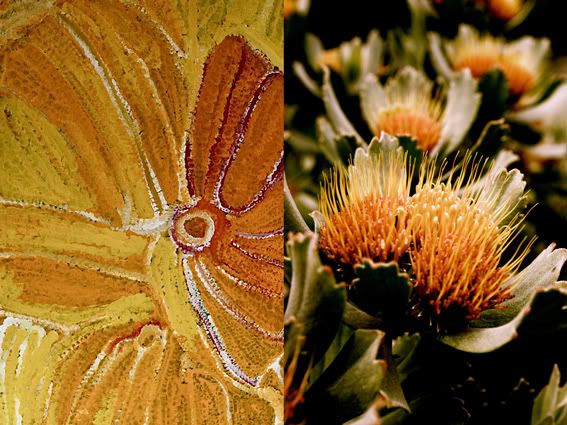
flowers in the house and garden (Felstead House 3)
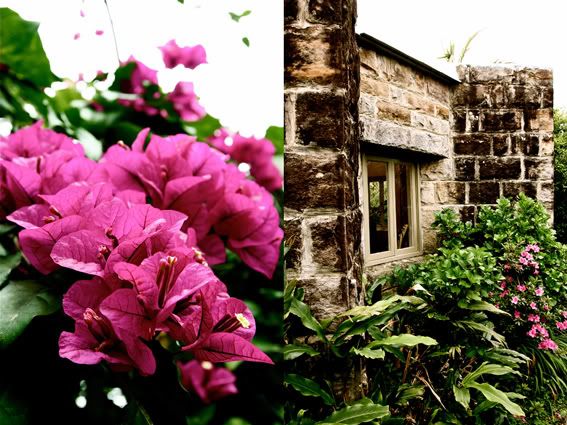
at home in the garden (Wilson House 1)
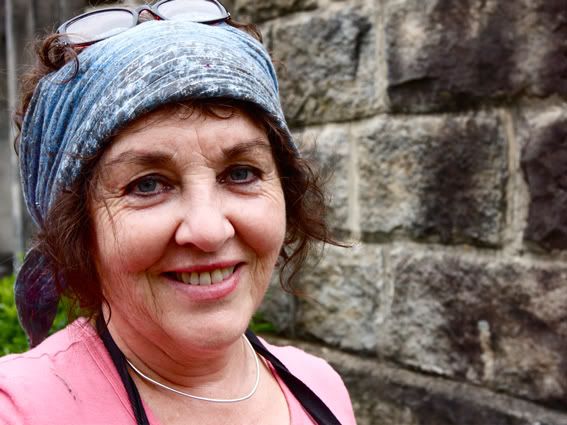
Fabia (Wilson House 2)

Edinburgh Road 1

sun on Moon House
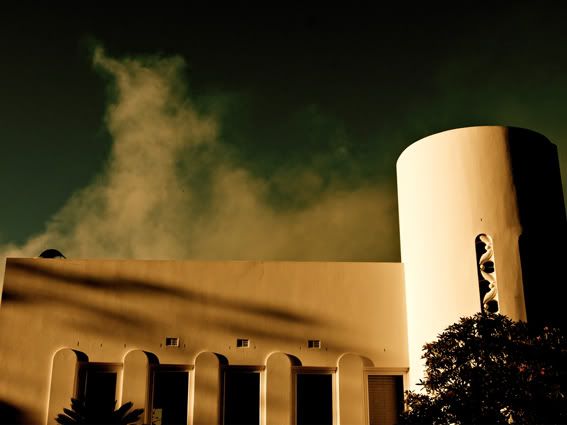
Edinburgh Road 2

Edinburgh Road 3
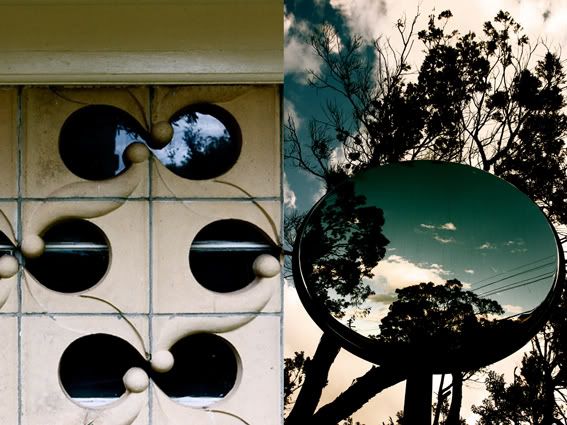
reflections
Part 2: Hugh Buhrich
After immersing myself in all things Griffin – including the whole fascinating Anthroposophy Steiner
philosophy aspect – I moved on to a later era and the other amazing force in Castlecrag architecture,
Hugh Buhrich.
After immersing myself in all things Griffin – including the whole fascinating Anthroposophy Steiner
philosophy aspect – I moved on to a later era and the other amazing force in Castlecrag architecture,
Hugh Buhrich.
Buhrich designed and hand-built two homes in the suburb, thirty years apart. I visited the second one,
built between 1968 and 1972.
Much has been written about the “the finest modern house in Australia” (Peter Myers) by people far
more knowledgeable than me. So all I’ll say is this - it was a thrill, one I doubt I’ll ever forget. The
wave-like roof and ceiling. The red bathroom. The death-defying spiral stairs that gave me vertigo
just looking at them. All of it just so inventive, playful and enjoyable.
In many respects it’s so Australian – made from organic materials (aside from the red fibreglass
bathroom), nestled into but not weighing upon the bush and filled with light and a sublime view
across Middle Harbour thanks to floor to ceiling glass. At the same time, however, it seems
absolutely from another planet – or at least another continent (not surprising perhaps given that
its architect and maker heralded from Europe).
Having experienced Hugh Buhrich’s masterpiece first-hand it’s almost unbelievable to think that
his great talents were underused and overlooked for so long.
My thanks again to his family for making the visit possible, a high point in the 52 Suburbs search
for beauty in the ‘burbs.
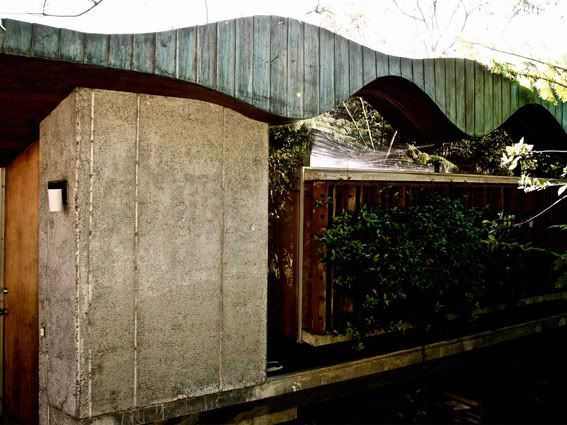
nestled in nature (Buhrich House 1)
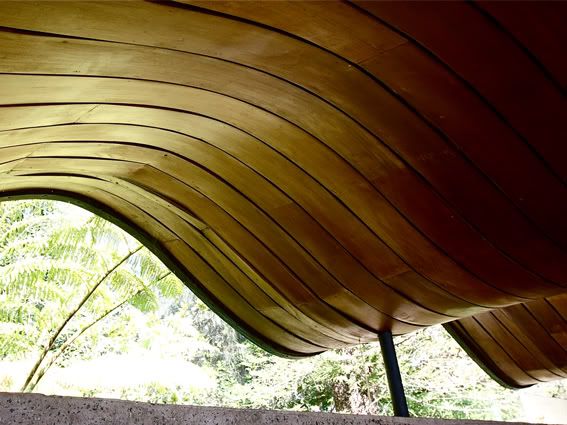
wave (Buhrich House 2)

harmony (Buhrich House 3)
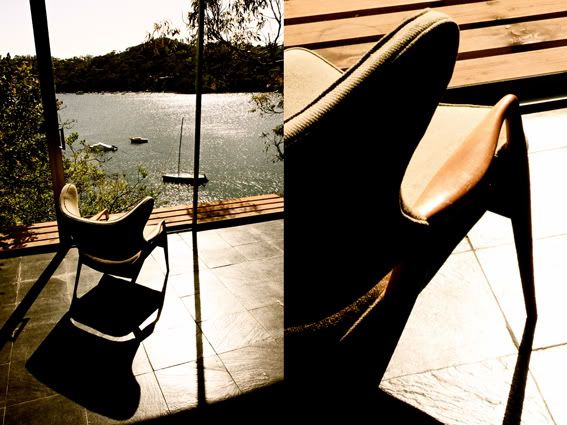
room with a sublime view (Buhrich House 4)

red (Buhrich House 5)
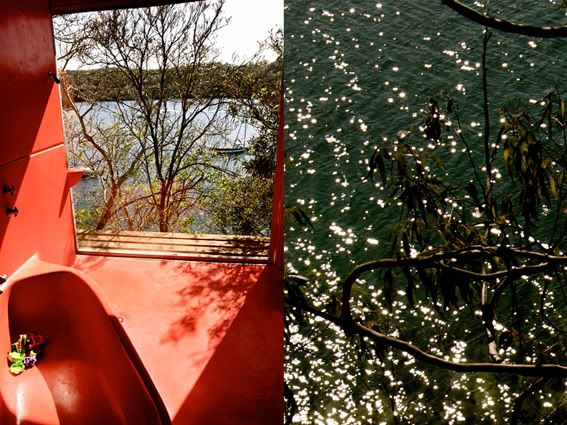
bathing in the ocean (Buhrich House 6)
Part 3: Other random encounters in Castlecrag
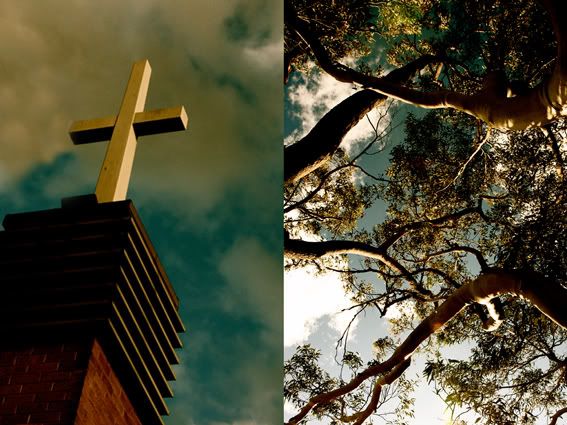
different religions

neat as a pin-stripe

number four
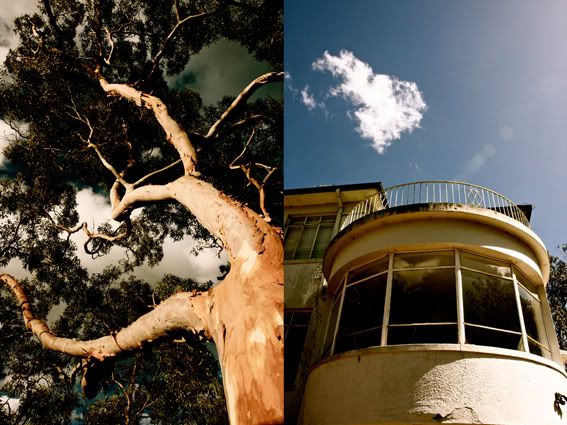
peeling

what's a 52 Suburbs post without a tattoo

fire across the water

the world turned orange
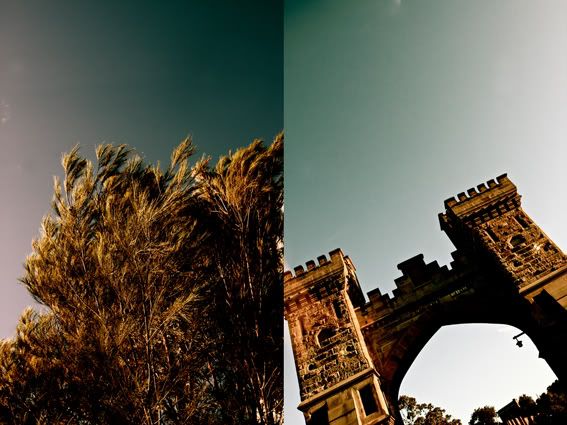
goodbye suburb of castles
Beauty? Castlecrag has it in bucketloads, both in the natural and the man-made. Just the way its
architects would have liked it.
architects would have liked it.
Next week... when my head stops reeling from this week's adventures I should have a better idea.
Or how about you decide? The suburb most requested will be next!
One last thing before I go for this week. I have expressed my thanks to the kind souls in Castlecrag.
Can I also just say thank you to everyone who's keeping me company on my travels. It may only be
a virtual kind of company but it means a great deal to me to know you're interested and enjoying
this little project of mine. I get great joy every time someone leaves a comment, sends me an
email or tweets about 52 Suburbs. So thank you!
See you next week.
Or how about you decide? The suburb most requested will be next!
One last thing before I go for this week. I have expressed my thanks to the kind souls in Castlecrag.
Can I also just say thank you to everyone who's keeping me company on my travels. It may only be
a virtual kind of company but it means a great deal to me to know you're interested and enjoying
this little project of mine. I get great joy every time someone leaves a comment, sends me an
email or tweets about 52 Suburbs. So thank you!
See you next week.






Well done. Yet again blow away by the amazing photos.
ReplyDeleteLouise - these are (again) incredible! I have a soft spot for the 'crag, and am really, as always, amazed how different it looks through your lens. You HAVE to put out a glossy book of these! Please!
ReplyDeleteWell done, I love the juxtapositioning of the photos and the glimpse into Sydney that you provide...
ReplyDeleteSo interesting. I used to work in Castlecrag, I wish I had know the history back then, I would have had more of a stickybeak at some of the houses.
ReplyDeleteHow about heading out west to Blacktown?
So brave of you to knock on doors. Asking is definitely one of the best ways to get good pics and meet great people.
ReplyDeleteI absolutely agree with Kate's comment - was just thinking I couldn't wait for the book!
ReplyDeleteI love the history lesson here, growing up in Canberra I know all about the Burley Griffin's, but in Castlecrag they had so much more freedom. Fabulous.
And Hurrah for the people sharing their homes and faces with you, and all of us.
I think you have to be blessed by the Gods to have the opportunity to live at Castlecrag (or you are a Kings Cross nightclub operator!).
ReplyDeleteTomorrow the Granny Smith Festival is on at Eastwood. Yes the apple came from the garden of Granny Smith of Eastwood.
If you don't get a book deal out of this then Australian publishers are totally nuts ... fabulous doesn't even begin to describe your photo's and your audacity for door knocking ... I'm so 'green' I didn't think of this first ;) Please keep on, don't let your enthusiasm wane, how about the inner west, Dulwich Hill could be interesting!
ReplyDeleteFortune smiles upon the bold! As a town planning student many years ago I loitered around Castlecrag furtively taking photos, but was never brave enough to knock on a door. What I've missed out on.....
ReplyDeleteI second the inner west - so interesting especially with the transition from industrial to residential. Did you know there is still a Bushell's tea factory operating in Concord adjacent to expensive housing that are located on a former paint factory site?
I've just discovered your blog and I'm just loving the pictures and the stories. I'm learning more about Sydney with every post :-)
ReplyDeleteI third the Inner West! (some time I'd love to see what you make of my part of the world, Haberfield, with its mix of amazing federation houses and Italian culture.)
I am loving this series, totally loving it. This week was beautiful and a reminder that such magical places exist.
ReplyDeletePerhaps next week you could visit suburbia, inland somewhere? I would like to see what you see...
I'm loving your blog. The photo's are gorgeous and your reserach is wonderful. Can't wait for the next instalment.
ReplyDeleteWhat a wonderful project, thank you. I just found you via Janet (two comments above me) and will be following you eagerly each week.
ReplyDeleteYour photography is exquisite.
Amazing...!
ReplyDeleteFantastic photos!
ReplyDeleteHow about a suburb that's very difficult to find the soul of: I've lived in Yagoona and Canterbury, both from memory rather soulless. I think you need a big challenge!
I was wondering, how many photo's do you take on a day out?
ReplyDeleteHi Louise, just wanted to say that I'm loving the blog. I'm a Melburnian these days, but lived in Sydney for a few years - miss it greatly. Your photos are brilliant.
ReplyDeletewow, extremely lucking! wonderful post again.
ReplyDeleteDelia W
ReplyDeleteIn answer to your question, how many photos do I take on a day out - usually about 100. Although yesterday it was twice that - lots of cast-offs but still! It was energising and exhausting at the same time. Always is though somehow.
Louise
Loving the pic's and history. How about looking at Sydney's Oldest suburb one week and then the next looking at Sydney's newest suburb?
ReplyDeletewow. Stunning. And what guts you have!
ReplyDeleteI agree with all the above! I grew up near Castlecrag and passed by part of it everyday on the bus going to the Steiner school nearby! Now I live in the UK so don't get back very often, so its really nice (and a bit distressing) to get all nostalgic over your photos. I also lived in the inner west which has an even stronger impression on my memory - so would love some photos of Annandale, Glebe, Balmain, Stanmore or Erskineville if you're heading that way! I had a similar idea of photographing areas and suburbs of London a few years ago - but never did - as there's a larger gap between wealth and poverty here in adjacent areas which is different to Sydney.
ReplyDeleteoh sorry I forgot to say in my previous comment - speaking of suburbs of castles - what about Hunter's Hill? :)
ReplyDeletegorgeous! you've given the houses and the suburb justice! I love seeing the homeowners, gardens and amazing architecture!
ReplyDeletewell done!
Corrie;)
Wow, I am so glad I found your blog. I used to live nearby and knowing the history behind it makes it so interesting. And your photos are beautiful!
ReplyDeleteRoxy
Excellent photos, insightful comments, all around an thoroughly enjoyable web experience. Hope you don't just stop at 52 suburbs.
ReplyDelete